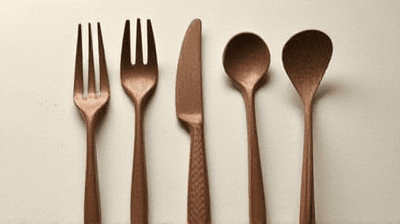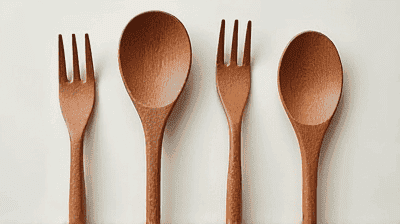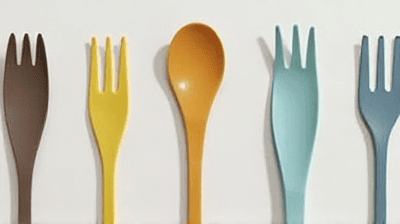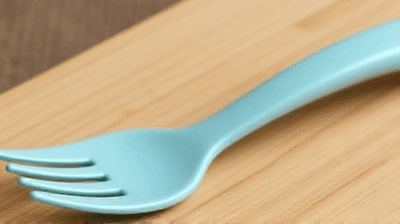
In the fight against single-use plastic waste, innovative solutions are emerging that challenge our traditional notions of food packaging and utensils. Among the most exciting developments in this realm is the rise of edible cutlery. This novel concept not only addresses the pressing issue of plastic waste but also adds an element of fun and creativity to dining experiences.
Plastic pollution is one of the most pressing environmental issues of our time. Millions of tons of plastic waste enter landfills and oceans each year, posing severe threats to wildlife, ecosystems, and human health. Single-use plastics, such as cutlery, plates, and straws, contribute significantly to this crisis. Here are some key statistics highlighting the urgency of this issue:
As public awareness of plastic pollution grows, so does the demand for sustainable alternatives. Innovative solutions, such as biodegradable materials, reusable products, and edible options, have emerged as viable strategies to reduce single-use plastic consumption.

Edible cutlery refers to utensils made from natural, food-grade ingredients that can be consumed after use. Unlike traditional plastic cutlery, which contributes to waste, edible cutlery is designed to provide an enjoyable eating experience while minimizing environmental impact. The concept of edible cutlery emerged as part of a broader movement towards sustainability and reducing food waste.
The origins of edible cutlery can be traced back to innovative entrepreneurs and food technologists seeking to solve the plastic pollution crisis. Pioneering companies have developed various types of edible cutlery, each with unique flavors and ingredients.
Flour-Based Cutlery: Many edible cutlery products are made from a blend of wheat or rice flour, water, and natural flavorings. They can range from spoons to forks and knives, designed to mimic the texture and functionality of traditional utensils.
Legume-Based Cutlery: Some manufacturers use legumes, such as lentils or chickpeas, to create eco-friendly utensils that are high in protein and fiber. This option appeals to health-conscious consumers and those with dietary preferences.
Spice-Infused Cutlery: To enhance flavor, some edible cutlery options are infused with spices or herbs, making them not only functional but also adding a delightful taste element to the meal.
Fruit and Vegetable Cutlery: Creative innovations have led to the development of cutlery made from dehydrated fruits and vegetables, offering unique flavors and nutritional benefits.
The most significant benefit of edible cutlery is its potential to massively reduce plastic waste. By providing an alternative to single-use plastic utensils, edible cutlery can help decrease the amount of plastic entering landfills and oceans.
Edible cutlery is naturally biodegradable and compostable, breaking down into organic matter after disposal. This characteristic aligns with sustainable waste management practices and supports a circular economy.
Edible cutlery introduces an element of fun to meals, especially in social gatherings and events. Diners can enjoy the novelty of consuming their utensils while savoring their food. This unique experience may encourage more mindful eating habits and creativity in meal presentation.
Many edible cutlery products are made from wholesome ingredients, providing additional nutritional benefits. For example, legume-based cutlery can be high in protein and fiber, complementing the nutritional content of the meal.
Edible cutlery can be customized in terms of shape, size, and flavor, making it suitable for various cuisines and dining experiences. This versatility allows businesses to cater to diverse consumer preferences and dietary restrictions.
The production of edible cutlery can create opportunities for local food producers and entrepreneurs, supporting efforts to develop sustainable food systems and encourage economic resilience.

The first step in producing edible cutlery involves sourcing high-quality, food-grade ingredients. Depending on the type of cutlery being produced, this could involve procuring flour, legumes, spices, or dehydrated fruits and vegetables.
Once the ingredients are sourced, they are combined in appropriate ratios to create a dough-like consistency. The formulation may vary based on flavor profiles and desired textures. This step often involves experimentation to optimize taste and usability.
The dough is then shaped into the desired cutlery forms—spoons, forks, or knives—using molds or extrusion methods. The shaping process must ensure the cutlery is functional and robust enough for use while also maintaining an appealing appearance.
After shaping, the edible cutlery is subjected to baking or dehydrating processes to achieve the necessary texture and hardness. This step is crucial to ensure the cutlery holds its shape and can withstand being used with food.
Once the cutlery is ready, it is packaged in eco-friendly materials for distribution. Sustainable packaging options maintain the integrity of the product while minimizing environmental impact.
Edible cutlery has gained popularity at food festivals, fairs, and outdoor events, where attendees seek unique dining experiences. Here, it serves as a sustainable alternative while enhancing the overall atmosphere of the event.
Many restaurants and cafés are adopting edible cutlery as part of their commitment to sustainability. By integrating edible utensils into their offerings, these establishments can attract environmentally conscious customers and differentiate themselves in a competitive market.
The convenience of edible cutlery makes it a perfect fit for fast food and takeout containers. Restaurants can offer complete meals with edible utensils, further reducing packaging waste and improving the customer experience.
Catering companies are incorporating edible cutlery into their menus to minimize waste while providing a fun, interactive dining experience. This approach aligns with the growing trend of sustainable catering practices.
Edible cutlery can play a role in educational settings, where it can be used to teach students about sustainability, nutrition, and innovative food technologies. Engaging students in hands-on experiences can help foster a deeper understanding of environmental issues.

While edible cutlery presents exciting opportunities, several challenges need to be addressed:
One of the primary challenges with edible cutlery is ensuring its shelf life and stability. Unlike traditional plastic utensils, edible cutlery must be designed to remain fresh and intact over time, requiring careful formulation and packaging.
The suitability of edible cutlery for various foods can vary. Some cutlery options may not hold up well with hot or liquid foods, limiting their use in certain culinary applications. Testing and improvement in design will be necessary to expand versatility.
While the novelty of edible cutlery is appealing, there may be resistance from consumers who are unfamiliar with the concept. Education and marketing efforts will be essential to promote the benefits and encourage broader acceptance.
Scaling up production of edible cutlery can pose challenges, especially in maintaining quality and consistency. Collaborations among producers and the adoption of innovative manufacturing practices may help facilitate larger-scale production.
As with any food product, edible cutlery must comply with food safety regulations and standards. Meeting these requirements will be crucial for producers seeking to enter the market.
Several companies worldwide are pioneering the production and promotion of edible cutlery. Here are a few noteworthy examples:
Founded in India, Bakey's is well-known for producing a range of edible utensils made from flour. Their products, which include spoons, forks, and straws, aim to replace single-use plastics and promote environmentally friendly dining.
Based in the United States, Eco-Tableware specializes in making edible cutlery and crockery from natural ingredients. Their products are designed for various culinary applications, allowing consumers to enjoy their meals with minimal environmental impact.
Loliware focuses on creating edible cups and straws that are made from seaweed and other natural ingredients. Their commitment to reducing plastic waste extends to their development of flavors and colorful design elements that enhance the dining experience.
This innovative company has developed a variety of edible spoons made from whole grains and legumes. Edible Spoon Co. emphasizes both sustainability and nutrition while providing exciting options for events and catering services.
Bakey's has gained recognition in street fairs and food festivals for its unique offerings. By providing edible cutlery, they engage consumers while raising awareness about sustainable dining practices.
As the trend for edible cutlery grows, we can expect continued innovation in the ingredients used. Companies will experiment with diverse natural materials, including gluten-free options that cater to various dietary preferences.
Collaboration among food producers, material scientists, and environmental organizations will drive further advancements in edible cutlery. These partnerships can lead to the development of improved production techniques and sustainable supply chains.
Increasing awareness around the environmental impact of single-use plastics will bolster interest in edible cutlery. Public campaigns and educational programs can highlight its benefits, promoting greater acceptance among consumers.
Edible cutlery could also find applications beyond food service. Innovations may lead to uses in parties, picnics, and social events where reducing waste is a priority. This expansion can increase the appeal and market penetration of edible utensils.
As governments continue to adopt policies aimed at reducing plastic waste, support for innovative solutions like edible cutlery may grow. Incentives for businesses that adopt sustainable practices could further encourage the development of eco-friendly products.
Edible cutlery represents an innovative and quirky solution to the pressing issue of single-use plastic waste. By combining sustainability with an element of fun, this novel approach to dining not only reduces environmental impact but also challenges traditional consumption habits.
As communities and individuals increasingly seek to minimize their ecological footprints, edible cutlery holds the potential to become a mainstream option in the food industry. With sustained efforts in research, consumer education, and collaboration, this creative innovation may play a vital role in shaping a more sustainable future for our planet.